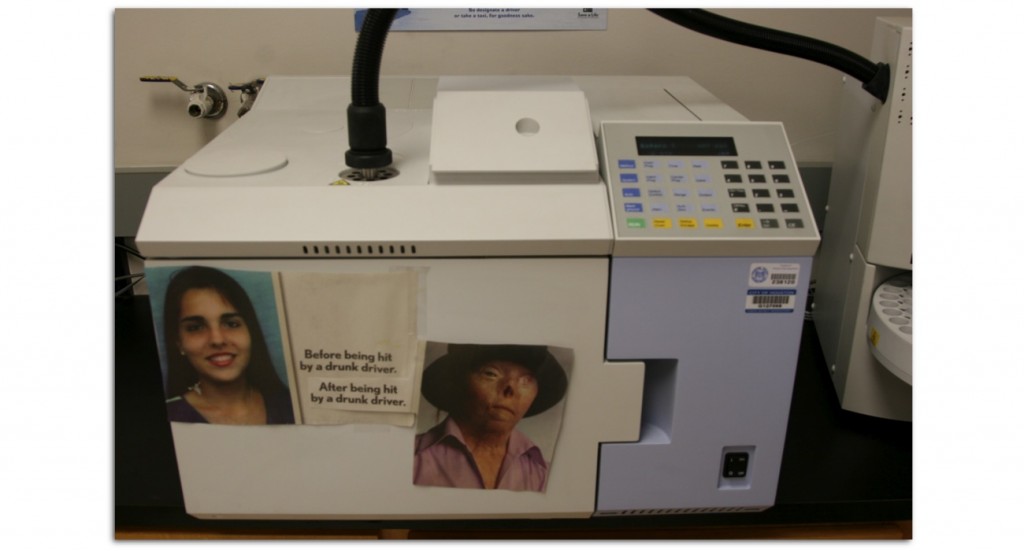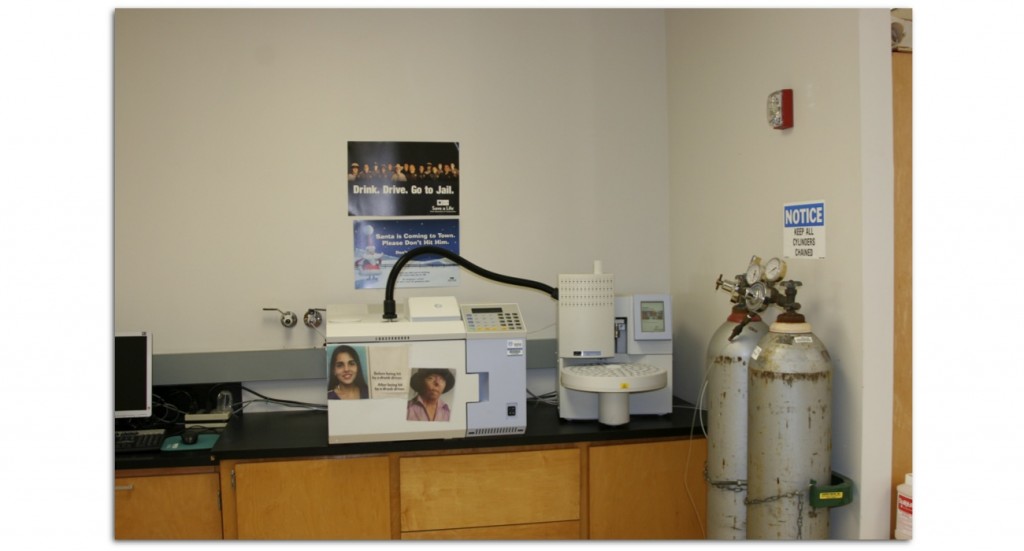The case for raw data: “Integration” in Gas Chromatography: How to make an innocent person guilty in a DUI case by manipulating the software.
The video below is part of the lecture that I gave at the hands-on laboratory training course held by the American Chemical Society (ACS) and Axion Analytical Labs in Chicago, IL on November 13, 2010.

A gas chromatograph (GC) is not like a calculator. With a calculator, if anyone inputs 1+1, it will always equal 2. With a GC, the potential for variability and change in the input, in the equation itself, in the result and the reporting of the result is limitless. The more apt analogy is more like a GC is like a paintbrush to a canvass in that the painter’s own use of the brush and his or her technique of using the brush itself that is only known to the individual painter, can have a large impact on what is recorded on the canvass.
The video below is a very, very simple demonstration of how a GC is not like a calculator.
Watch how with just a few clicks of a mouse, you can turn an 0.05 ETOH result (which would be a Not Guilty in all 50 states as to a per se DUI charge for a non-commercial driver who has a non-restricted license and is over the age of 21) achieved by headspace gas chromatography with a flame ionization detector (HS-GC-FID) into a result that is well-above the legal limit.
There are at least two ways of taking a Not Guilty result and making it into a Guilty result.
One way of manipulating the data can be discovered by a well-trained individual based upon some tell-tale signs. The other way is totally and completely undiscovered if one only looks at the chromatogram. This is video shows exactly why there is a need to get the raw data to discover what the analyst and the software has done to manipulate the raw data.
These methods are taught to machine operators.
The issue of integration happens more frequently than one thinks. In fact some form of it happens with every single test and sampling. It is built into the method.
How do you know your reported result is a true result?
A printed chromatogram???????
NOPE.
As we can see, the truth is that you can manipulate the raw data to literally make the graphical representation of the raw data (i.e., the chromatogram) to show anything you want on the chromatogram.
You can make peaks disappear (by scaling), reshape the peaks, add area count, subtract area count, recalculate the baseline, etc. In short, manipulate. It is all customizable. It is not fixed. It is not a calculator.
What you get in the chromatogram and the reported results depends entirely on the integrity of the machine operator and/or the software method programmer or installer.
How do you calculate the area of a gaussian peak??? Where do you start and end??? If you change the baseline you change the area necessarily.
What defense attorneys, prosecutors, the court and even lab supervisors all get, if we even get a chromatogram from the sampling, is quite frankly the white washed end product of the manipulation of the data. It is what the analyst or programmer wants you to see. It does not necessarily reflect objective reality. It is a piece of paper.
Ever since I became aware of this issue, I have been insisting on getting the raw ChemStation or TotalChrom computer raw data.
When you look at the data without integration parameters set to manipulate the data, the difference in the reported results can be remarkable.
To a degree, the quantification of an analyte of interest becomes artful in the sense that it is interpretive, not truly science and objective.
This is supposed to be objective empirical science folks, right?!?!?!?
So, you see the above. You understand my point, but you still don’t believe that an analyst would dare to do all of this. Maybe you think that an analyst would never be motivated to change a result to harm a stranger. I offer you this. This is the HS-GC-FID work station at crime lab that a colleague and great friend of mine, Doug Murphy, Esquire of Texas visited after he got a court order, over the lab’s vehement objection.


____
More on GC can be found here: Blog posts on Gas Chromatography
AND
https://www.paduiblog.com/2010/03/articles/dui-testing/when-tall-and-skinny-is-always-beautiful-fundamental-principles-of-gas-chromatography/
AND
https://www.paduiblog.com/2010/02/articles/dui-testing/why-saying-the-sample-was-run-on-a-gas-chromatograph-is-nearly-meaningless/
______________
If you want to learn more about this and all matters of chromatography (headspace, gas chromatography, liquid chromatography, flame ionization detectors, UV detectors, Mass Spectrometers, preparative chromatography, etc.) contact me about it. Here is a video on the training.



Amanda Bynum says:
This is an interesting post, McShane, thanks for sharing!
james m says:
thanks for the info. i work in a chemical plant and have seen some of these techniques used in our lab to get the “proper” result. i am currently fighting a dui blood test. it’s frustrating that the public has no idea how easy it is to change the result. i am curious, has anyone ever subpoenaed all the results from a lab to determine the percentage of samples that come in below the legal limit? my guess is, the vast majority are over. the lab tech may see too many low ones in a batch and make a shift to get the “proper” results. thanks!
DUI Lawyer Miami says:
Unbelievable that this is so easy to change into a DUI. What would be the motivation to do so?